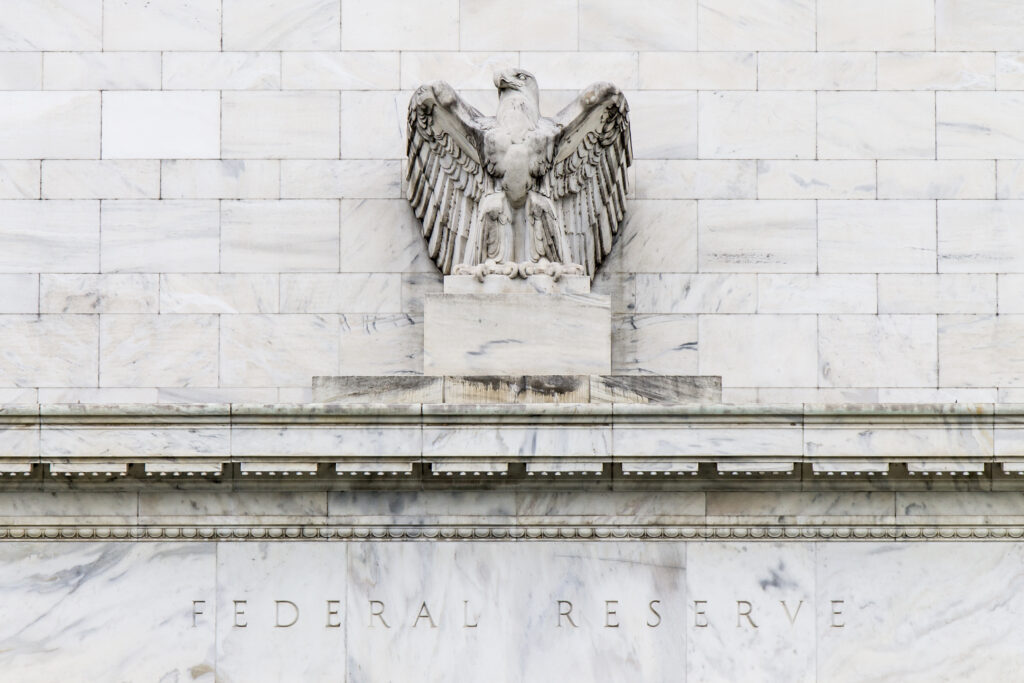For the fourth meeting in a row, the Federal Reserve’s Federal Open Market Committee (FOMC) made the call that their best course of action was to do nothing with interest rates, a developing trend as the Committee chose to hold rates steady at 5.50% at their last three meetings.
The most aggressive series of rate hikes in history ended in June when the committee held off on raising rates due to a litany of positive factors which consisted of 11 straight rate hikes over 15 months. Since the post-pandemic rate hikes began, the FOMC raised rates in March 2022 (+25 points), May 2022 (+50 points), June 2022 (+75 points), August 2022 (+75 points), September (+75 points), November 2022 (+75 points), December 2022 (+50 points), February 2023 (+50 points), March 2023 (+25 points), May 2023 (+25 points), June 2023 (+0 points), July (+25 points), September (+0 points), November (+0 points), December (+0 points), and January (+0). This is equivalent to a rise of 5.00 percentage points in under two years.
This string of rate hikes that have occurred since the pandemic has been necessary according to the FOMC to tamp down inflation, which reached a high of 9.1% in June 2022. While inflation has eased, it is still above the committee’s target rate of 2%. However, the Fed now predicts that inflation will not come down to their 2% target until sometime in 2026.
The target rate now stands at 5.25-5.50%. The committee next convenes for its first meeting of 2024 on March 19-20, 2024.
In a prepared statement released at the end of the meeting, the FOMC said:
“Recent indicators suggest that economic activity has been expanding at a solid pace. Job gains have moderated since early last year but remain strong, and the unemployment rate has remained low. Inflation has eased over the past year but remains elevated.”
“The Committee seeks to achieve maximum employment and inflation at the rate of 2 percent over the longer run. The Committee judges that the risks to achieving its employment and inflation goals are moving into better balance. The economic outlook is uncertain, and the Committee remains highly attentive to inflation risks.”
“In support of its goals, the Committee decided to maintain the target range for the federal funds rate at 5-1/4 to 5-1/2 percent. In considering any adjustments to the target range for the federal funds rate, the Committee will carefully assess incoming data, the evolving outlook, and the balance of risks. The Committee does not expect it will be appropriate to reduce the target range until it has gained greater confidence that inflation is moving sustainably toward 2 percent. In addition, the Committee will continue reducing its holdings of Treasury securities and agency debt and agency mortgage-backed securities, as described in its previously announced plans. The Committee is strongly committed to returning inflation to its 2 percent objective.”
“In assessing the appropriate stance of monetary policy, the Committee will continue to monitor the implications of incoming information for the economic outlook. The Committee would be prepared to adjust the stance of monetary policy as appropriate if risks emerge that could impede the attainment of the Committee’s goals. The Committee’s assessments will take into account a wide range of information, including readings on labor market conditions, inflation pressures and inflation expectations, and financial and international developments.”
After the meeting, First American Deputy Chief Economist Odeta Kushi commented on the news:
“Investors are expecting the Federal Reserve (Fed) to keep rates unchanged and are hoping for guidance on the outlook for interest rates, especially when the Fed may cut rates. When the Fed does eventually cut rates, it will be because inflation has made significant progress towards its 2% target or because they believe a recession will ensue without an easing in monetary policy.”
“Inflation continues to garner widespread attention for its role in diminishing consumer purchasing power. But how is purchasing power measured for potential home buyers looking to buy a home? House prices are typically reported nominally. In other words, without adjusting for any inflation. Just like other goods and services, the price of a house today is not directly comparable with the price of that same house 30 years ago because of the long-run influence of inflation in the economy.”
“The First American Real House Price Index (RHPI) helps provide an alternative view of the change over time of house prices in different markets across the country. The three key drivers of the RHPI are incomes, mortgage rates and an unadjusted house price index. Incomes and mortgage rates are used to inflate or deflate unadjusted house prices to better reflect consumers’ purchasing power and capture the true cost of housing.”
“According to the latest RHPI reflecting November 2023, affordability as measured by the RHPI improved modestly on a monthly basis, but leaped 11% on an annual basis. Two factors drove the sharp annual decline in affordability—a 7.7% annual increase in nominal house prices, according to our First American Data & Analytics House Price Index, and a 0.6 percentage point increase in the 30-year, fixed mortgage rate compared with one year ago. Even though household income increased 3.4% since November 2022 and boosted consumer house-buying power, it was not enough to offset the affordability loss from higher rates and rising nominal prices.”
“Assuming that mortgage rates fall to 6% by the end of 2024, household income grows at the pre-pandemic historical average of approximately 3%, and nominal house prices increase by 3.5% annually, then affordability as measured by the RHPI will improve by approximately 8% by the end of 2024 compared with one year ago. A more affordable housing market will be welcome news for buyers currently sitting on the sidelines. However, even at this level, affordability will remain more than 35% worse than in February 2022, just before the Fed started increasing rates.”
Greg McBride, CFA, Chief Financial Analyst at Bankrate also commented on the news:
“The Federal Reserve will hold interest rates steady at their first meeting of 2024, but all the curiosity surrounds when the Fed will begin to cut interest rates. There is nothing in the economy compelling the Fed to cut rates as soon as March—which investors have been pinning their hopes to—so expect the Fed to push back by emphasizing that inflation still needs to show further improvement.”
“Inflation is easing, but has further to go to get to the 2% level. Robust consumer demand and continued strength in the labor market could lead to inflation moving back up, or at least not moving lower as consistently as we’ve seen in recent months. The Fed will want some more time to evaluate the progress on inflation before hinting as to when rate cuts may begin.”
“The Fed will transition to cutting interest rates this year, so now is the time for savers to lock in CDs, especially maturities longer than one year. CD yields have peaked and have begun to pull back so there is no advantage to waiting if you have the money to deploy right now.
Voting for the monetary policy action were Jerome H. Powell, Chair; John C. Williams, Vice Chair; Thomas I. Barkin; Michael S. Barr; Raphael W. Bostic; Michelle W. Bowman; Lisa D. Cook; Mary C. Daly; Philip N. Jefferson; Adriana D. Kugler; Loretta J. Mester; and Christopher J. Waller.






